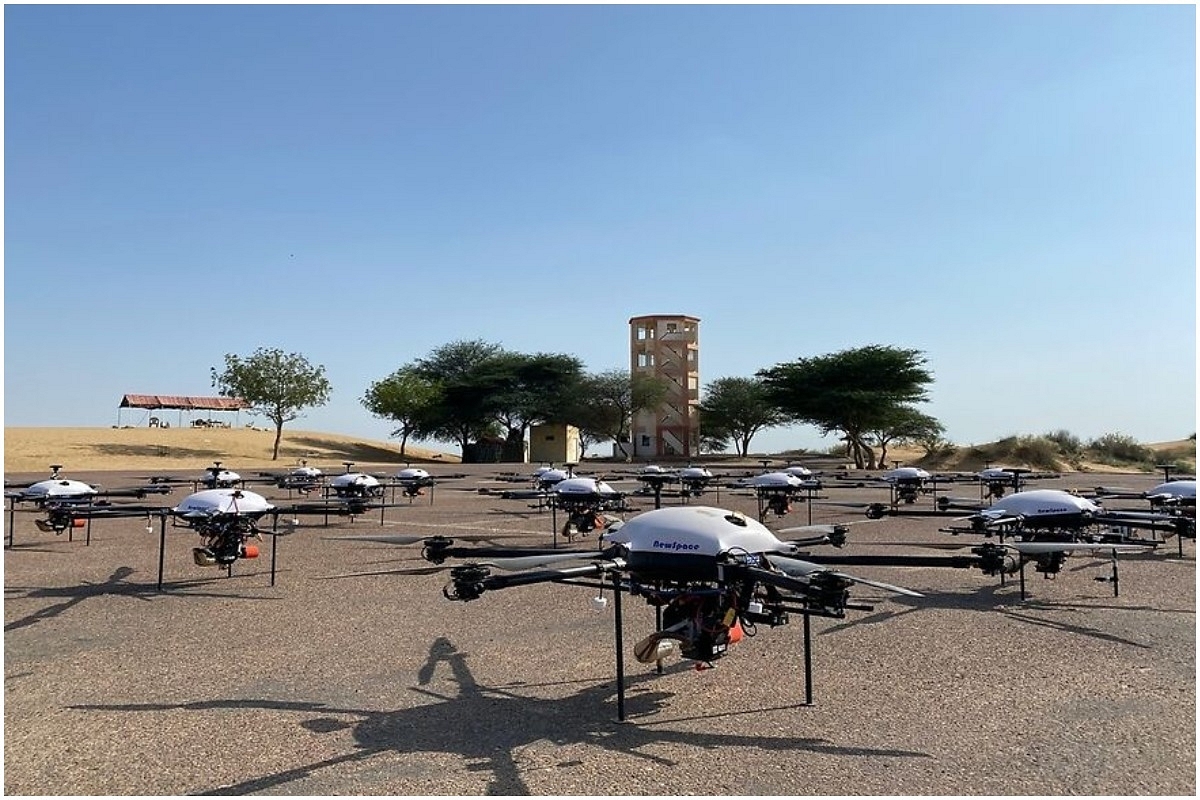Defence
India Prohibits Chinese Components In Military Drones Over 'Security Loopholes' Compromising Critical Data

SWARM drones from NewSpace. (@MaverickBharat/Twitter)
Indian authorities have recently implemented measures to prohibit domestic military drone manufacturers from incorporating components produced in China, citing apprehensions surrounding security vulnerabilities, Reuters reported on Tuesday (8 August).
This decision comes amid escalating tensions between India and China and aligns with India's ongoing military modernization drive, which emphasizes the increased deployment of unmanned quadcopters, long-endurance systems, and other autonomous platforms.
Government and industry insiders reveal that India's security bras harbor concerns that Chinese-manufactured parts within drones' communication functions, cameras, radio transmission, and operating software could compromise intelligence-gathering capabilities.
"One tender document said such subsystems had "security loopholes" that compromised critical military data, and called for vendors to disclose components' origin," the Reuters report says.
This step complements the phased restrictions on surveillance drone imports, which have been in place since 2020.
In two separate meetings held in February and March, Indian military officials informed potential bidders for drone contracts that equipment or subcomponents originating from "countries sharing land borders with India" would not be deemed acceptable due to security reasons.
A senior defense official confirmed that this reference pertains to China.
However, the prohibition on Chinese components has driven up the expenses associated with local military drone production as manufacturers are compelled to seek alternative sources, leading to financial implications.
Sameer Joshi, the founder of NewSpace Research and Technologies, a Bengaluru-based supplier of small drones for India's military, underscored that a significant 70 per cent of the goods within the supply chain originate in China. Joshi further explained, "So if I talk to, let's say, a Polish guy, he still has his components which are coming via China."
The shift towards non-Chinese suppliers has resulted in a substantial surge in costs, as articulated by Joshi. He also mentioned that certain manufacturers continue to import materials from China but opt for a practice known as "white-labeling," allowing them to maintain cost structures within a certain framework.
India's dependence on foreign manufacturers extends to both drone components and complete systems due to its limited expertise in certain drone types' manufacturing.
According to Y. Dilip, the director of the state-run Aeronautical Development Establishment (ADE), a government-funded initiative aimed at creating an indigenous Medium Altitude Long Endurance unmanned system faces a delay of approximately five years.
This platform, named Tapas, has largely met the stipulated criteria; however, further refinements are necessary to achieve the military's objective of a drone capable of operating at altitudes up to 30,000 feet and sustaining flight for 24 hours.
Dilip explained, "Primarily we were constrained by the engines," as neither domestically produced engines nor international models were deemed suitable for the task at hand.
Beyond the Tapas project, which is slated to commence military testing this month, ADE is actively engaged in the development of a stealth unmanned platform and a High Altitude Long Endurance platform. However, the completion of these initiatives is anticipated to take several years.
In an effort to address these capability gaps, India announced its intention during Prime Minister Narendra Modi's US visit in June to procure 31 MQ-9 drones from the at a cost exceeding $3 billion.
Support Swarajya's 50 Ground Reports Project & Sponsor A Story
Every general election Swarajya does a 50 ground reports project.
Aimed only at serious readers and those who appreciate the nuances of political undercurrents, the project provides a sense of India's electoral landscape. As you know, these reports are produced after considerable investment of travel, time and effort on the ground.
This time too we've kicked off the project in style and have covered over 30 constituencies already. If you're someone who appreciates such work and have enjoyed our coverage please consider sponsoring a ground report for just Rs 2999 to Rs 19,999 - it goes a long way in helping us produce more quality reportage.
You can also back this project by becoming a subscriber for as little as Rs 999 - so do click on this links and choose a plan that suits you and back us.
Click below to contribute.
Latest